
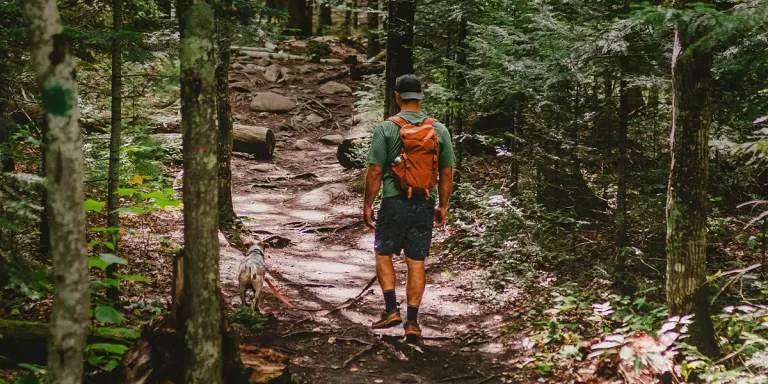
Backpacking in Michigan offers immense variety for outdoor enthusiasts, from the dense forests of the Upper Peninsula to the inland lakes and dunes of the Lower Peninsula.
Popular destinations include Pictured Rocks National Lakeshore, Sleeping Bear Dunes National Lakeshore, and Porcupine Mountains Wilderness State Park.
And that’s what this post is all about – backpacking in Michigan. We’ll provide tips to help you prepare for backpacking in this diverse state as well as showcase the TOP 5 multi-day trails.
Interested? Let’s get started.
Explore the most scenic backpacking trails in Michigan for unforgettable adventures:
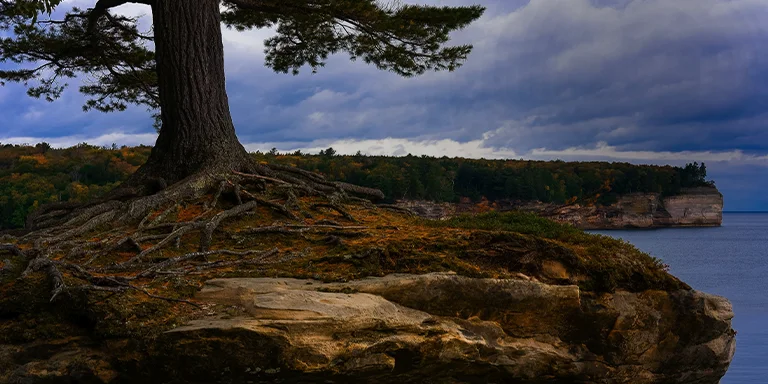
Length: 42 mi / 67.6 km
Type: Point to point
Difficulty: Moderate
Elevation Gain: 2060 ft / 628 m
Location: Pictured Rocks National Lakeshore
Estimated Hiking Calorie Burn: 11 100 calories
More Details: See on AllTrails
The Hartwick Pines Trail offers a stunning 42-mile backpacking route through Michigan’s Upper Peninsula. You can expect rugged terrain along this section of the North Country Trail, with landscapes ranging from sand dunes to dense forests and rivers. Campsites spaced along allow breaking up the journey. Highlights are Little Beaver Lake’s beautiful sands and waters, and cliff views of vast forest and river valleys. Abundant wildlife and remote solitude make this a premier U.P. backpacking destination.

Photo by Nicholas Klein
Length: 19.2 mi / 30.9 km
Type: Loop
Difficulty: Moderate
Elevation Gain: 1824 ft / 556 m
Location: Manistee National Forest
Estimated Hiking Calorie Burn: 5800 calories
More Details: See on AllTrails
The Manistee River Loop Trail offers a scenic 19.2-mile backpacking route through Michigan’s Lower Peninsula. You will encounter forests, ravines and beautiful river views. Numerous campsites along the multiple trails, including the Manistee River Trail, break up the 7-hour journey. Highlights are cascades, a historic bridge, azure waters and river views from campsites, making this a popular destination.
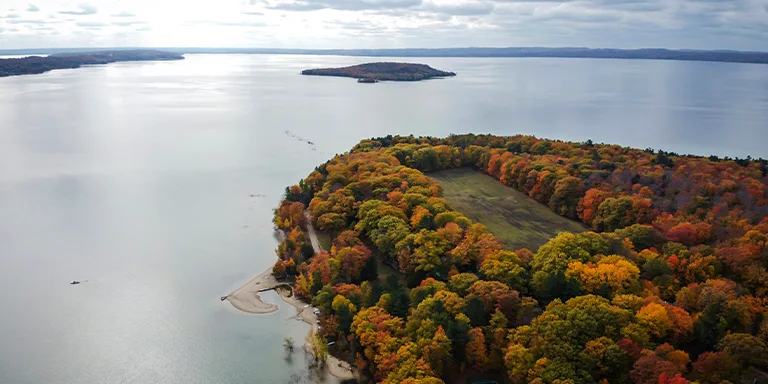
Length: 41.5 mi / 66.8 km
Type: Loop
Difficulty: Moderate
Elevation Gain: 1584 ft / 483 m
Location: Traverse City
Estimated Hiking Calorie Burn: 11 000 calories
More Details: See on AllTrails
The Boardman River Trail offers a scenic 41.5-mile loop near Traverse City, Michigan. You can expect moderately challenging terrain ranging from hills to scenic river views. Numerous spots along the trail allow breaking up the 13-hour journey. Highlights include scenic Boardman River vistas, though the hilly route with wooden steps may not suit all visitors. Solitude can still be found during quiet periods on this popular multi-use trail.
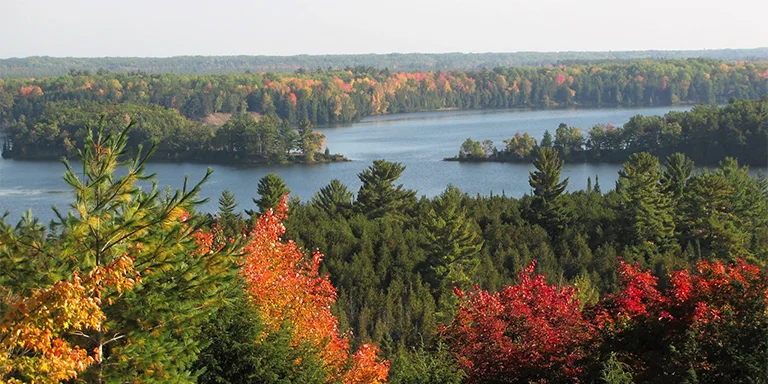
Length: 38.6 mi / 62.1 km
Type: Loop
Difficulty: Moderate
Elevation Gain: 1519 ft / m
Location: Manistee National Forest
Estimated Hiking Calorie Burn: 9200 calories
More Details: See on AllTrails
The Musketawa Trail offers a scenic 38.6-mile loop near White Cloud, Michigan. You can expect a moderately challenging route that takes over 12 hours to complete. This multi-use trail is well-maintained and sees few other visitors. Solitude can be found on this route, but a park pass is required. However, self-registration for the day is easily available.
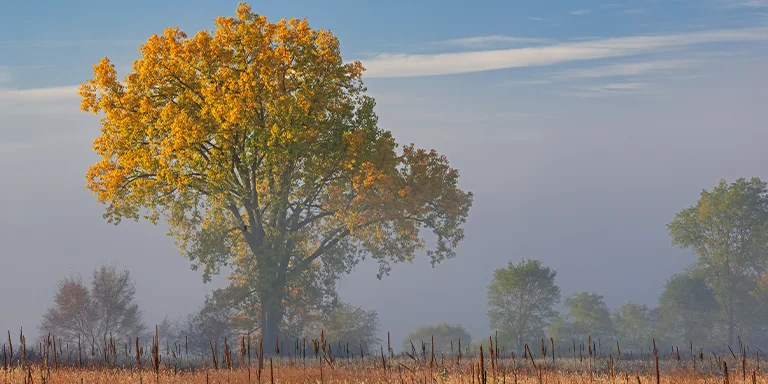
Photo by dpenn
Length: 12.6 mi / 20.3 km
Type: Out and back
Difficulty: Moderate
Elevation Gain: 1092 ft / m
Location: Yankee Springs Recreation Area
Estimated Hiking Calorie Burn: 3800 calories
More Details: See on AllTrails
The Yankee Springs section of the North Country Trail offers a scenic 12.6-mile out-and-back near Middleville, Michigan. You can expect moderate terrain along this well-maintained route, passing lakes with scenic views year-round. Highlights include opportunities for birdwatching, camping, and solitary exploration during quiet times.
Michigan experiences a diverse climate across its various regions. Let’s look at Upper Peninsula and Lower Peninsula.
We suggest checking weather forecasts and terrain conditions before heading out. Plan long or exposed hikes on clear days. Begin early to avoid storms and bring a sturdy tent. Always have backup plans in case of severe weather.
Before you grab your backpack, take a look at the weather statistics for Michigan Center:
| Jan | Feb | Mar | Apr | May | Jun | Jul | Aug | Sep | Oct | Nov | Dec | |
|---|---|---|---|---|---|---|---|---|---|---|---|---|
| High °F | 31 | 34 | 45 | 59 | 69 | 78 | 82 | 79 | 72 | 60 | 47 | 36 |
| Low °F | 18 | 20 | 28 | 39 | 49 | 58 | 62 | 61 | 53 | 43 | 33 | 24 |
| Rain/Snow (D*) | 6 | 5 | 7 | 9 | 10 | 10 | 11 | 10 | 9 | 8 | 7 | 7 |
Not sure if Michigan is right for you?
Don’t forget to check out our backpacking guides for Wisconsin and Indiana.
When camping in Michigan, you can have campfires, but you need to follow rules. Only use established fire rings in specific campgrounds. Don’t have fires outside of these areas when there’s a high or extreme risk of fire. Check with local authorities about fire bans and restrictions, which can vary by location and time of year.
For an exploration trip, tell park rangers your route and when you’ll be back. Take a map, compass, or GPS if there’s no phone signal. Watch for sudden weather changes. Bring extra food and layers. Hike with a friend for help if needed. Keep food safe from bears and stay calm around wildlife. If you see a black bear, back away slowly; don’t run from cougars.
Exploring the mountains and national parks means you may see black bears, so keep your food and smelly stuff locked up tight. If you spot a bear while exploring, move away slowly and don’t look it in the eyes. Cougar attacks are rare. But be careful around moose, especially if there are babies, while exploring the mountains. If a moose charges you, hide behind a tree. Watch out for poisonous snakes like copperheads and rattlesnakes when exploring the mountains and parks in warm weather. Stay far from all animals while exploring trails. Bringing bear spray gives extra safety while exploring mountains and national parks.
When you’re out fishing while backpacking in the beautiful nature of Michigan, focus on catching trout, bass, pike, and panfish. Make sure to pack lightweight and compact fishing gear, such as a collapsible rod and a small tackle box, to fully enjoy the outdoors. Opt for artificial lures and flies, as they are lighter than live bait. Target moving water like rivers and streams, which are abundant in nature and hold more fish. It’s best to fish early in the morning or at dusk when the fish are more active in the great outdoors. For a more secluded experience, consider obtaining a backcountry permit to access remote lakes and streams with less fishing pressure, allowing you to immerse yourself in the tranquility of nature.
The Michigan part of the North Country National Scenic Trail is over 1000 miles long, going through the upper and lower peninsulas. If you walk the whole Michigan part, it takes about 2-3 months, covering 10-15 miles a day. If you’re short on time, you can do 100-200 mile sections in 1-2 weeks. The really beautiful and secluded parts in the western Upper Peninsula and northern Lower Peninsula might take longer because of tough terrain.